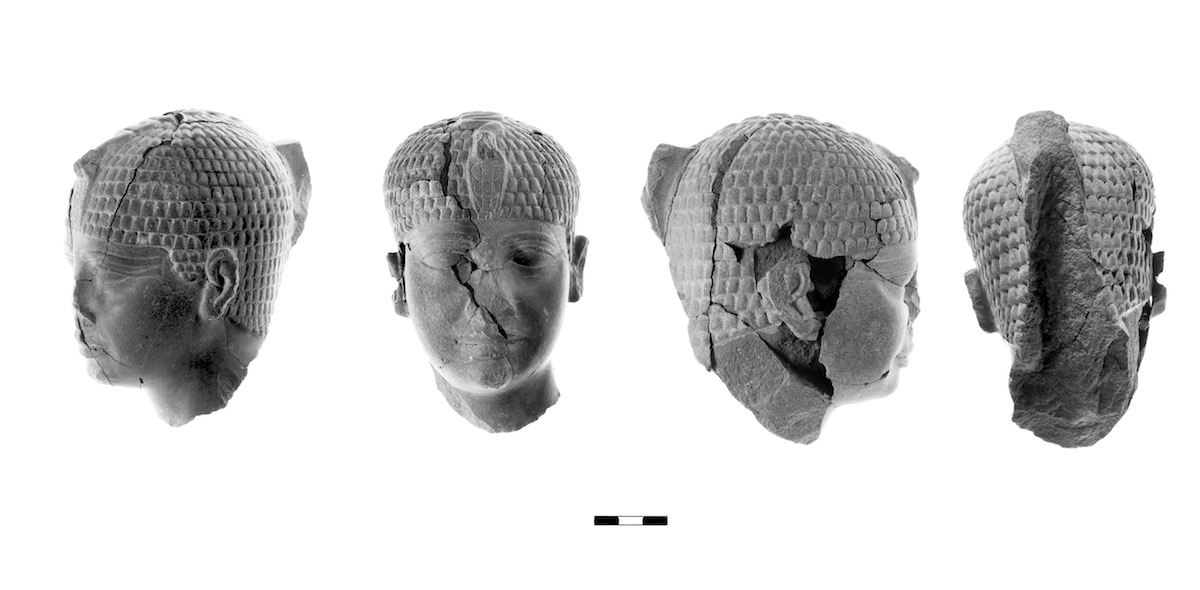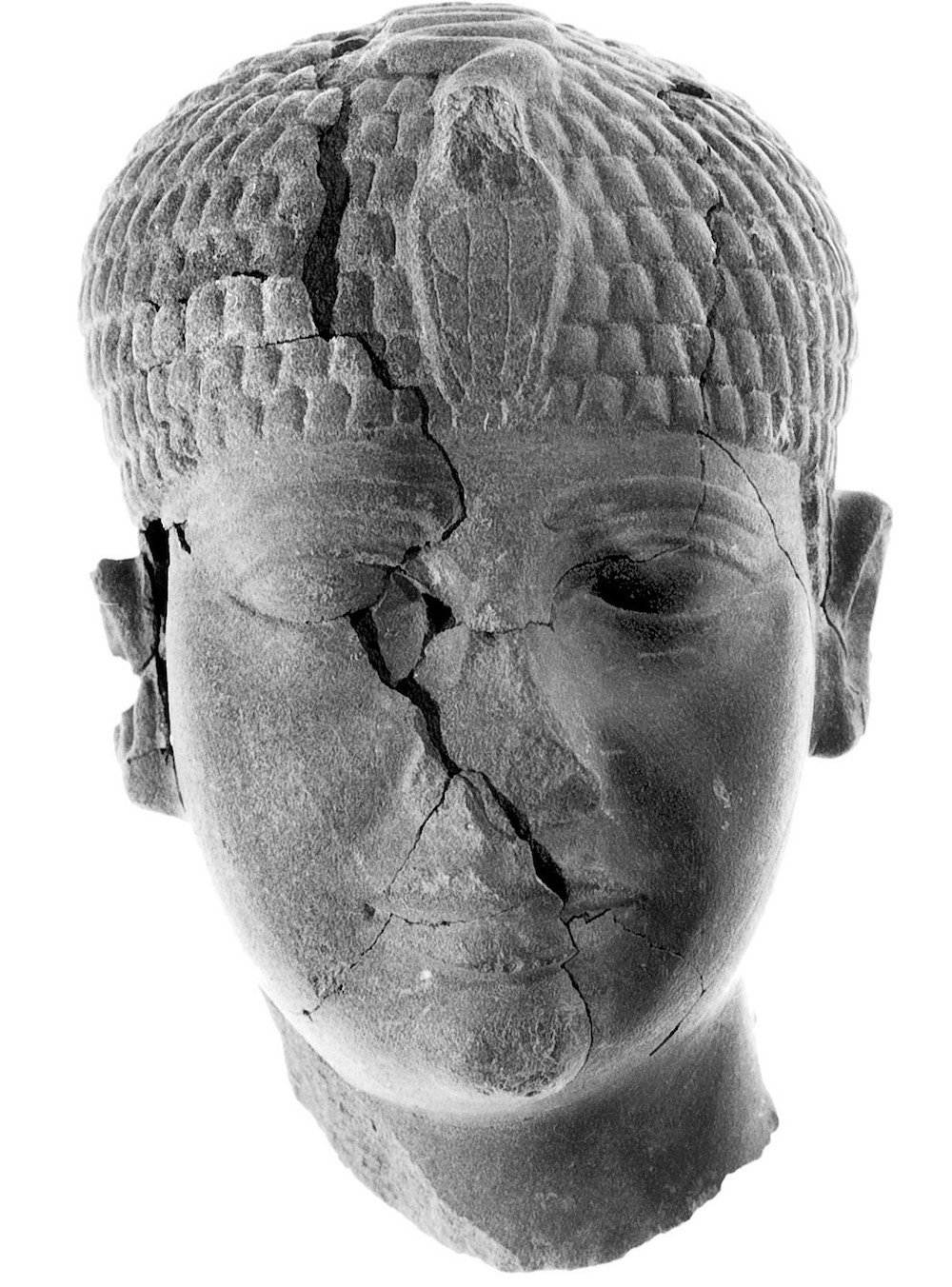4,300-Year-Old Statue Head Depicts Mystery Pharaoh

A sculpture of an unknown Egyptian pharaoh's head, found at the ancient city of Hazor in Israel, dates back around 4,300 years, to a time when Egyptians were building pyramids. The sculpture was smashed apart around 3,300 years ago, possibly after an Israeli force led by Joshua destroyed the city, researchers have found.
Researchers said the sculpture, excavated and reconstructed in 1995 and discussed in the recently published book "Hazor VII: The 1990-2012 Excavations, the Bronze Age" (Israel Exploration Society, 2017), leaves them with a number of questions: Which pharaoh does it show? Why was it transported to Hazor? And why did it survive for a millennium before being smashed apart when Hazor was destroyed?
"The history of the statue was surely quite complex, and the kingdom of Hazor must have been eager to use and display a prestige object connected to Egyptian royal imagery," wrote Egyptologists Dimitri Laboury and Simon Connor in a report published in the book. [Biblical Battles: 12 Ancient Wars Lifted from the Bible]
"The person depicted wears a short, close-fitting, curled cap wig, topped by a uraeus, the solar cobra that rises above the forehead of [a] pharaoh in ancient Egyptian iconography, thus identifying our character as a king of Egypt beyond any doubt," wrote Laboury, a senior research associate at the Belgian National Foundation for Scientific Research (F.R.S.-FNRS) at the University of Liège, and Connor, a curator at the Museo Egizio in Turin, Italy.
"The rendering of these facial features on the piece from Hazor are characteristic of the 5th Dynasty [circa 2465-2323 B.C.], although it does not seem possible to determine with any certainty which king it depicts," wrote Laboury and Connor, who also noted that the head was once part of a larger statue.

Destroyed city
Hazor was destroyed in the mid-13th century B.C., possibly by an Israeli force led by Joshua. A passage from the Book of Joshua in the Bible claims that Joshua's force destroyed a large army led by "Jabin," a king of Hazor. The passage also says that after destroying the army, Joshua sacked Hazor.
"Joshua turned back and captured Hazor and put its king to the sword," the biblical text from Joshua 11:10-11 reads. "Everyone in it, they put to the sword. They totally destroyed them, not sparing anyone that breathed, and he [Joshua] burned Hazor itself."
Sign up for the Live Science daily newsletter now
Get the world’s most fascinating discoveries delivered straight to your inbox.
Whether the Israelis were actually the group that destroyed Hazor is a matter of debate among scholars, but research shows that the city was sacked and this sculpture was one of many statues that were smashed. "The cracks indicate that the nose had been broken and the head detached from the rest of the sculpture before being shattered," wrote Laboury and Connor in their report. "Interestingly, no other part of the statuette to which it had originally belonged was recovered at the site."
A number of Egyptian statues have also been discovered at Hazor, including one found in 2013that has the paws of a sphinx. "Given Hazor's location in northern Israel, the number of Egyptian statues and statuary fragments uncovered at the site is surprising," a team of scholars wrote in another report published in the book. "All statues appear to have been deliberately smashed to pieces."
Editor's Note: This article was updated to indicate that in the Hebrew Bible Joshua acts as the leader of the Israeli people, though he is not referred to as a king.
Original article on Live Science.

Owen Jarus is a regular contributor to Live Science who writes about archaeology and humans' past. He has also written for The Independent (UK), The Canadian Press (CP) and The Associated Press (AP), among others. Owen has a bachelor of arts degree from the University of Toronto and a journalism degree from Ryerson University.










